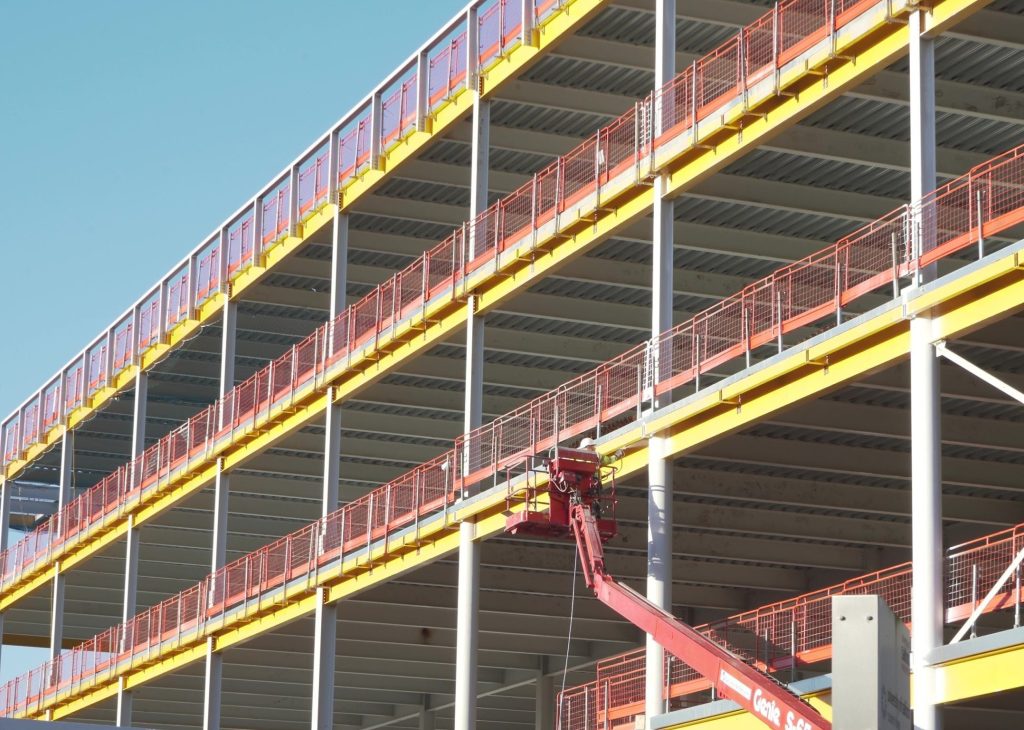Revised guidelines makes calculating coatings for fire protection clearer, delivering effective fire protection is one of the most important measures when developing or renovating buildings.
Since the Grenfell Tower disaster building regulations have been refined and tightened, to ensure all materials and methods deliver compliant and safe structures. Preventing further tragedies is paramount.
Requirements for fire protection are dictated both by national legislation and global standards, supported by industry guidelines. Leading industry guidance has recently been updated to ensure vital information around fire protection is clear.
The ASFP publication Fire Protection for Structural Steel in Buildings – known as the Yellow Book within the industry – has revised its tables for temperature guidance. The Yellow Book gives guidance on the manufacturing, testing, specification and use of passive fire protection for structural steel. It guides developers on how to calculate the critical temperature for structural steel members, allowing constructors to determine the thickness of intumescent coating required to achieve fire protection.
Intumescent coatings are a popular and highly effective method, applied to protect structures from fire and heat, but are not simply a ‘one size fits all’ approach.
Because of the importance of correct application of coatings, an expert view on how they are applied and what level of protection they afford is essential. Understanding the end use of a building and the framing scope is central to this.
What are intumescent coatings?
Intumescent coatings are one of the most effective forms of passive fire protection for structural steel buildings.
They are a paint-like material which protect and prolong the structure and integrity of steel in the event of a fire. If subjected to high temperatures, chemicals within the coatings swell and expand, preventing or slowing steel reaching a critical temperature. Because steel softens at extremely high temperatures, intumescent coatings protect its structural integrity.
By supporting the steel to maintain its load-bearing capacity intumescent coatings extend the length of time a structure can withstand fire, prolonging the time in which a building can be safely evacuated.
The Yellow Book advises on how the classification of fire protection changes according to a structure’s framing components as well as based on the buildings end-use. Because both these factors affect the ‘failing temperature’ of a frame, they inform on what level of protection is required. For example, densely populated buildings require a higher failing temperature, granting longer for evacuation, then buildings typically holding fewer occupants.
Failing temperature dictates at what temperature components will lose their strength, indicating the period of time in which a building can be safely evacuated. For example, densely populated buildings like offices require a higher failing temperature, granting longer for evacuation, then buildings typically holding fewer occupants.
The end-use of a building will inform on how much time is required for a full evacuation. The framing scope will indicate where coatings can expand without impacting key features of the building or compromising the tensile strength or load bearing capacity of other members or materials.
Intumescent coatings must be fully understood to be used effectively. While they do not compromise the properties of structural steel, their requirement to swell under high temperatures must be factored into a structure’s design to safely accommodate expansion in the event of a fire.
Intumescent coatings are recognized as both an effective and flexible method for fire protection.
Experienced contractors and suppliers should be enlisted to advise on the classification and application of fire protection methods from the very start of projects, allowing this to be factored into design and costings.

